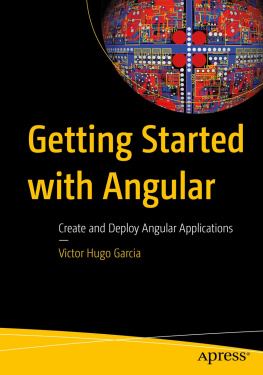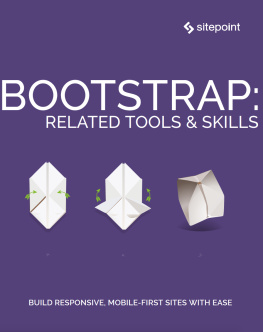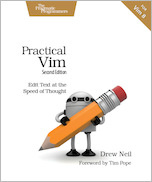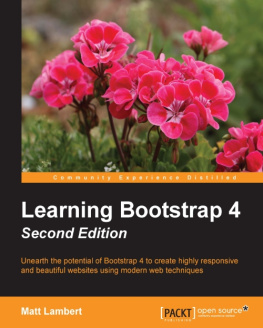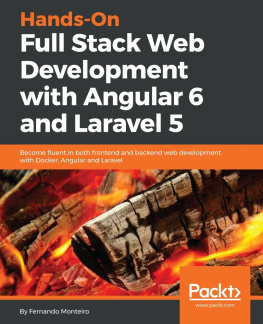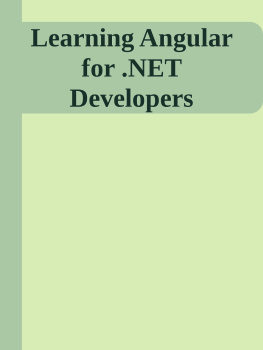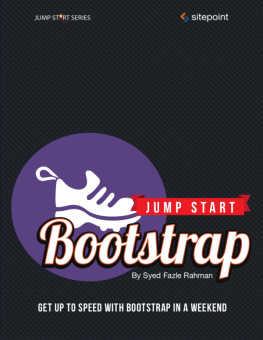Jeffry Houser - Learn With: Angular 4, Bootstrap, and NodeJS
Here you can read online Jeffry Houser - Learn With: Angular 4, Bootstrap, and NodeJS full text of the book (entire story) in english for free. Download pdf and epub, get meaning, cover and reviews about this ebook. year: 2017, publisher: DotComIt, LLC, genre: Computer. Description of the work, (preface) as well as reviews are available. Best literature library LitArk.com created for fans of good reading and offers a wide selection of genres:
Romance novel
Science fiction
Adventure
Detective
Science
History
Home and family
Prose
Art
Politics
Computer
Non-fiction
Religion
Business
Children
Humor
Choose a favorite category and find really read worthwhile books. Enjoy immersion in the world of imagination, feel the emotions of the characters or learn something new for yourself, make an fascinating discovery.

- Book:Learn With: Angular 4, Bootstrap, and NodeJS
- Author:
- Publisher:DotComIt, LLC
- Genre:
- Year:2017
- Rating:5 / 5
- Favourites:Add to favourites
- Your mark:
- 100
- 1
- 2
- 3
- 4
- 5
Learn With: Angular 4, Bootstrap, and NodeJS: summary, description and annotation
We offer to read an annotation, description, summary or preface (depends on what the author of the book "Learn With: Angular 4, Bootstrap, and NodeJS" wrote himself). If you haven't found the necessary information about the book — write in the comments, we will try to find it.
Learn With: Angular 4, Bootstrap, and NodeJS — read online for free the complete book (whole text) full work
Below is the text of the book, divided by pages. System saving the place of the last page read, allows you to conveniently read the book "Learn With: Angular 4, Bootstrap, and NodeJS" online for free, without having to search again every time where you left off. Put a bookmark, and you can go to the page where you finished reading at any time.
Font size:
Interval:
Bookmark:
Angular, Bootstrap, and NodeJS
By Jeffry Houser
https://www.learn-with.com
https://www.jeffryhouser.com
https://www.dot-com-it.com
Copyright 2017 by DotComIt,LLC
Jeffry Houser is a technical entrepreneur that likes toshare cool stuff with other people.
In the days before business met the Internet, Jeffryobtained a Computer Science degree. He has solved a problem or two in hisprogramming career. In 1999, Jeffry started DotComIt; a company specializing incustom application development.
During the Y2K era, Jeffry wrote three books for OsborneMcGraw-Hill. He is a member of the Apache Flex Project, and created Flextras; alibrary of Open Source Flex Components. Jeffry has spoken all over the US. Hehas produced hundreds of podcasts, written over 30 articles, and written a slewof blog posts.
In 2014, Jeffry created Life After Flex; an AngularJStraining course for Flex Developers. In 2016, Jeffry launched the Learn Withseries with books focusing on using AngularJS with other technologies. Jeffryhas worked with multiple clients building AngularJS applications.
Table of Contents
I was a Flex developer for a long time; however, Adobes Flash Platformis no longer relevant. A smart developer will spend time educating himself onnew technologies to keep up with a changing market, and to make sure he hashealthy job prospects in the future. While cultivating these new skills, Idecided to write about my experiences. With this series of books, you canleverage my experience to learn quickly.
This book is about my experiences building Angularapplications. Angular is a JavaScript framework built by Google for buildingsmart user interfaces. It is built on TypeScript and allows you to builddynamic views in HTML5. It is fully testable, which is important to manyenterprise-level applications. It has a large developer community, ready tohelp with problems. I greatly enjoy building applications with Angular.
This book will show you how to build a Task Managerapplication using Angular and Bootstrap. It uses REST services built withNodeJS, so Angular can interact with a fully functional backend.
The purpose of this series is to teach by example. The planis to build an application using multiple technologies. These books willdocument the process, with each book focusing on a specific technology orframework. This entry will focus on Angular 4 as the application framework, andBootstrap as the primary UI component library.
The application built in this book will focus on commonfunctionality required when I build applications for enterprise consultingclients. Youll receive step-by-step instructions on how to build a taskmanager application. It will integrate with a service layer. A login will berequired. Functionality will be turned off or on based on the users role. Datawill be displayed in a DataGrid, because all my enterprise clients love DataGrids.Common tasks will be implemented for creating, retrieving, and updating data.
Want to learn about building HTML5 applications? Are youinterested in Angular or Bootstrap? Do you want to learn new technologies byfollowing detailed examples with runnable code? If you answered yes to any ofthese questions, then this book is for you!
Here are some topics well touch on in this book, and whatyou should know before continuing:
TypeScript: This is the language behind Angular.TypeScript is a statically typed language that compiles to JavaScript. The moreyou know about it, the better. If you are not familiar with it yet, check out our tutorial lesson on learningthe basics of TypeScript.
NodeJS: We use these scripts to compile our TypeScriptinto JavaScript, process CSS, and copy files. Well also use NodeJS to buildrest services which the main UI will integrate with. Familiarity with NodeJSwill be beneficial, but is not required.
JavaScript: TypeScript compiles to JavaScript to run inthe browser. Aside from that, we touch on JavaScript routinely through the bookin order to configure NodeJS scripts, and SystemJS; a module loader used byAngular. You should be familiar with JavaScript.
Angular: The primary focus of this book is on Angular, sowe are going assuming you have no experience with it. At the time of thiswriting, the most current version is Angular 4. If youre looking forinformation on the AngularJS 1.x code base, check out some of the other booksin this series.
JSON: The data returned from the services will be done soas JSON packets. JSON should be easy to understand, but if you have noexperience with it, check out our freeintroduction.
Bootstrap: This is a CSS framework that helps createthings such as popups and date choosers. Well use it in conjunction withAngular to help flesh out the applications user interface.
SQL: This is the database Server used as the storage mechanismfor this book. As such, the SQL language will be used to communicate with thedatabase from NodeJS. There arent any advanced SQL concepts in this book, butyou should have a general understanding of this type of database Server.
Each chapter of this book represents one aspect of theapplications user interface; logging in, editing a task, etc. Each chapter issplit up into these parts:
Building the UI: This section will show you how tocreate the UI elements of each chapter.
The Database: There will be sections to review the datathat each chapters functionality deals with. The database storage tables willbe examined here, as well as an explanation of the data types.
The Services: This section will cover the APIs of the servicesthat need to be interacted with. This book will help you create services usingNodeJS. If youre feeling adventurous, you should be able to build out theservices to any language of your choice.
Connecting the UI to the Services: This section will showyou how the UI code will call the services and handle the results.
I use some common conventions in the code behind this book.
Classes: Class names are in proper case; the firstcharacter of the class in uppercase, and the start of each new compound wordbeing in uppercase. An example of a class name is MyClass. Whenreferencing class names in the book text, the file extension is usuallyreferenced. For TypeScript files that contain classes the extension will be ts.For JavaScript files, the extension is js.
Variables: Variable names are also in proper case, exceptthe first letter of the first compound word; it is always lowercase. Thisincludes class properties, private variables, and method arguments. A sampleproperty name is myProperty.
Constants: Constants are in all uppercase, with each wordseparated by an underscore. A sample constant may be MY_CONSTANT.
Method or Function Names: Method names use the sameconvention as property names. When methods are referenced in text, open andclose parentheses are typed after the name. A sample method name may be myMethodName().
Package or Folder Names: The package namesor foldersarenamed using proper case again. In this text, package names are alwaysreferenced as if they were a directory relative to the application root. Asample package name may be com/dotComIt/learnwith/myPackage.
The goal of this book is to help you become productivecreating HTML5 apps with a focus on Angular. It leverages my experiencebuilding business apps, but is not intended to cover everything you need toknow about building HTML5 Applications. This book purposely focuses on theAngular framework, not the tool chain. If you want to learn more about the toolchain, check out our bonusbook. You should approach this book as part of your learning process andnot as the last thing youll ever need to know. Be sure that you keep educatingyourself. I know I will.
Font size:
Interval:
Bookmark:
Similar books «Learn With: Angular 4, Bootstrap, and NodeJS»
Look at similar books to Learn With: Angular 4, Bootstrap, and NodeJS. We have selected literature similar in name and meaning in the hope of providing readers with more options to find new, interesting, not yet read works.
Discussion, reviews of the book Learn With: Angular 4, Bootstrap, and NodeJS and just readers' own opinions. Leave your comments, write what you think about the work, its meaning or the main characters. Specify what exactly you liked and what you didn't like, and why you think so.

